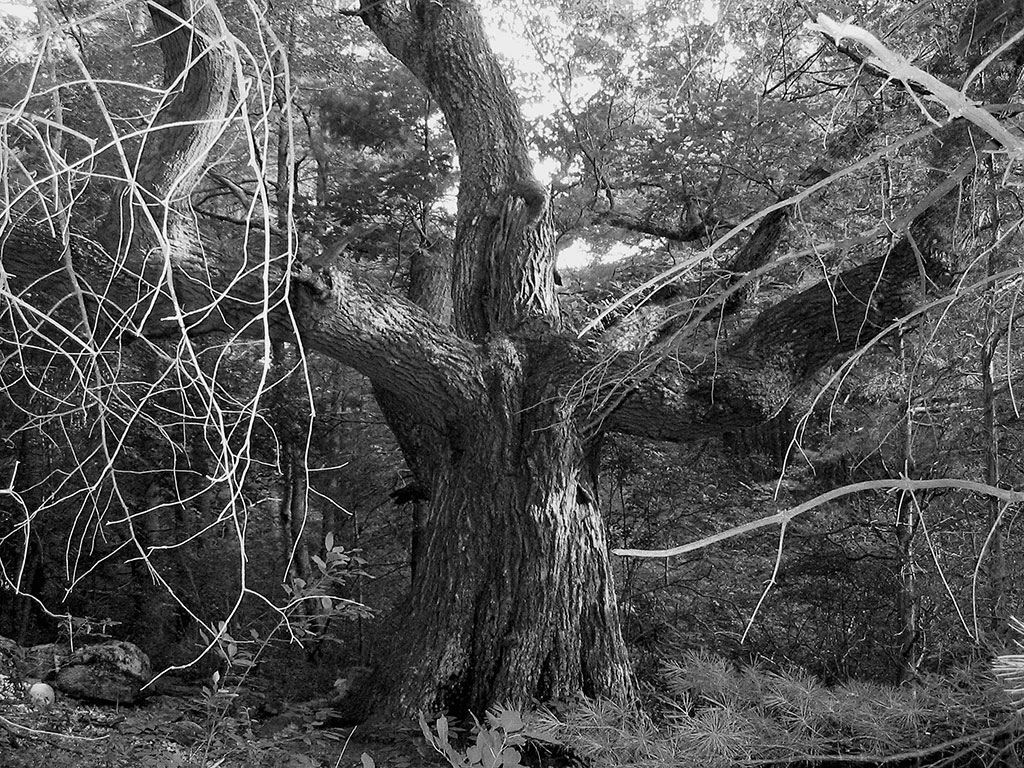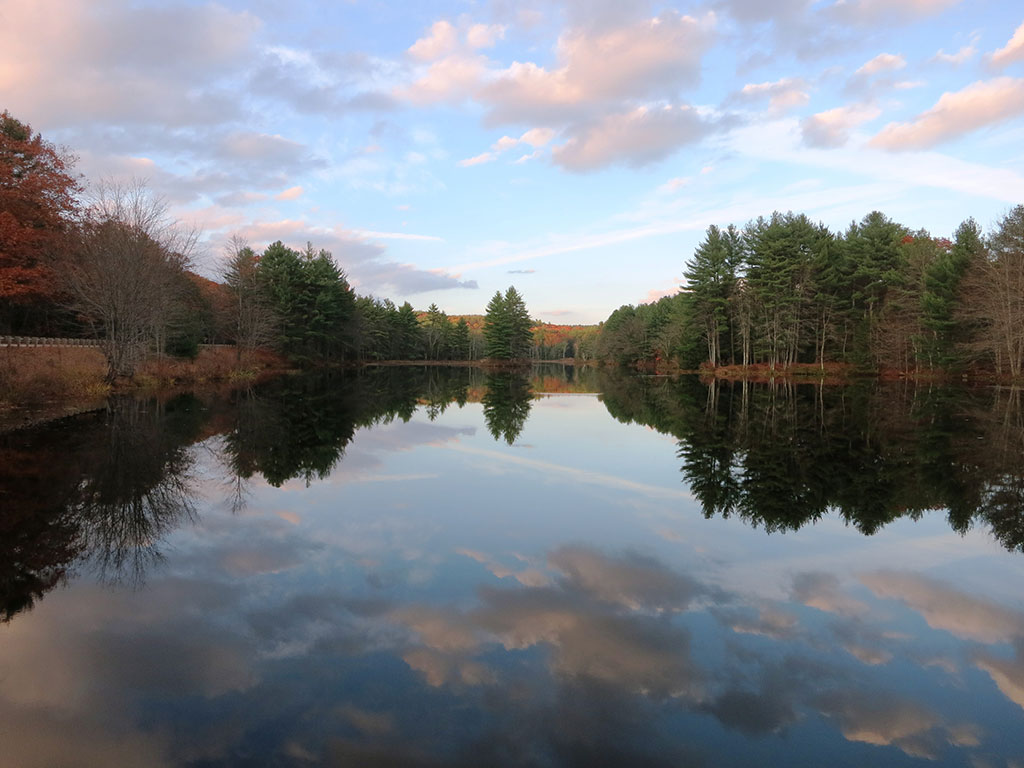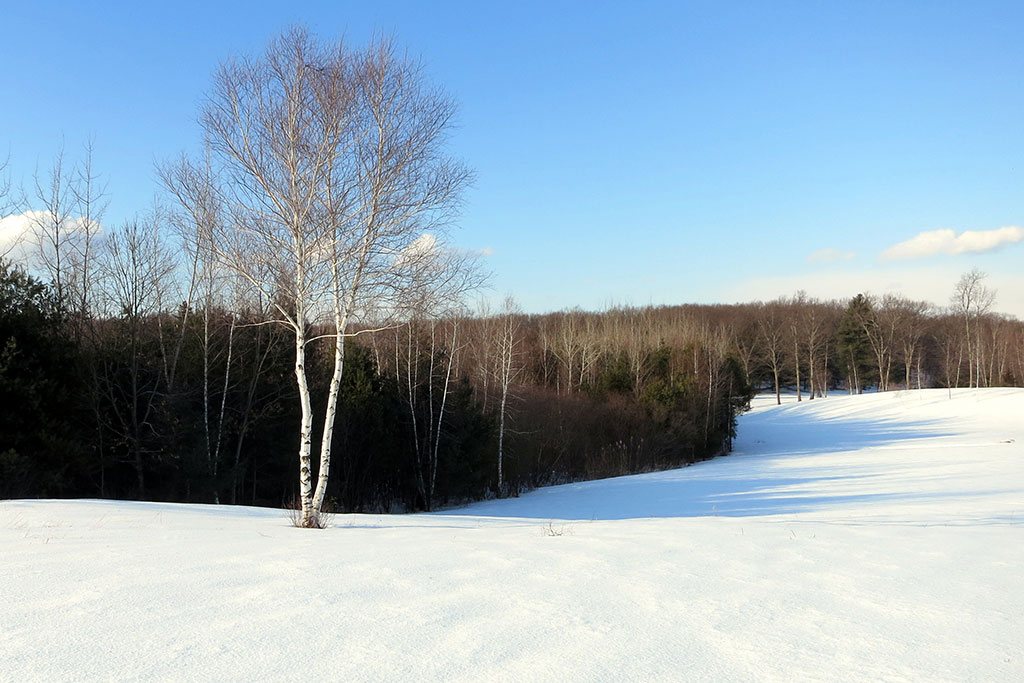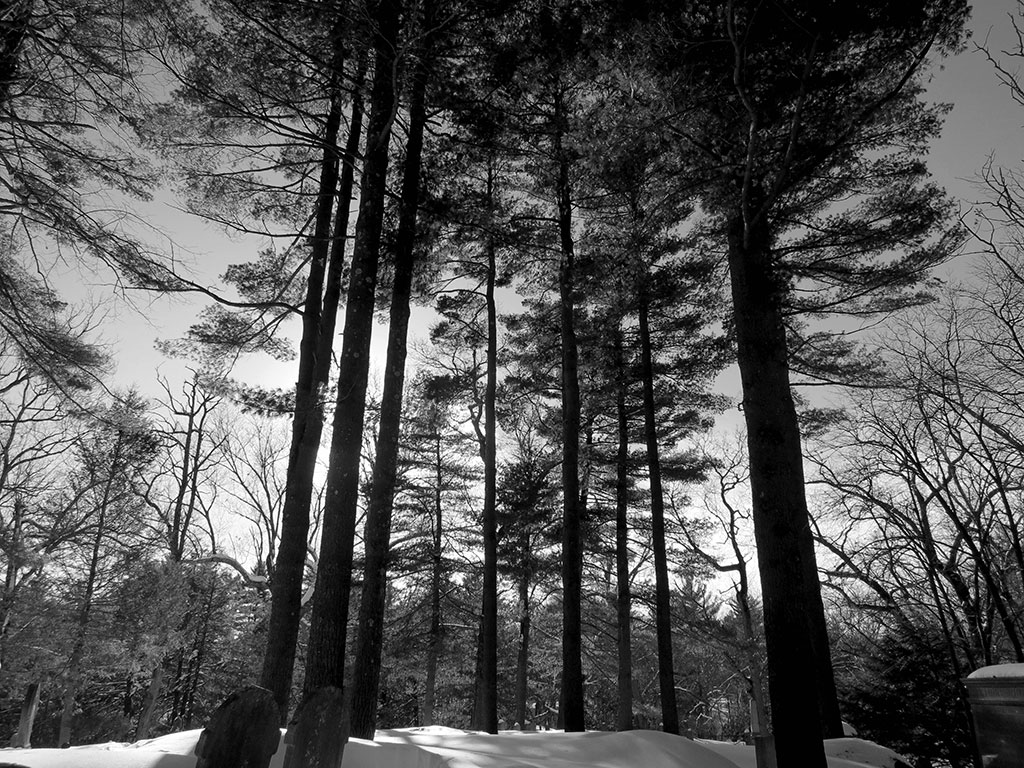How the American writer saw trees as miracles that encapsulate all that is good about nature.
By Richard Higgins • Photography by Richard Higgins
Henry David Thoreau was captivated by trees, and they played a significant role in his artistic creativity, philosophical thought and even his inner life. He responded emotionally to trees, but he also understood them scientifically as a naturalist. As a writer, Thoreau portrayed them so perfectly that it was as if he could see the sap flowing beneath their bark. When he wrote in The Maine Woods that the poet loves the pine tree as his own shadow in the air, he was speaking about his connection to trees. In short, he spoke their language.
What drew him to trees? Their beauty and form delighted his eye. Their wildness struck a chord in him. Their patience reminded him that we will sooner overtake the dawn by remaining here, where we are, than by chasing the sun across the western hills. By spending his life rooted in Concord, Thoreau emulated trees’ tenacious hold on earth.
If Thoreau thought human nature was bent, he saw trees as upright and virtuous, as the nobility of the vegetable kingdom. Their very stance spoke of the “ancient rectitude and vigor of nature.” Nothing, he said, “stands up more free from blame than a pine tree.”
Old trees connected Thoreau to a realm of time not counted on the town clock, an endless moment of fable and possibility. Such trees reminded him “that I, too, am a remote descendant of the heroic race of men of whom there is tradition.”
And, they were his teachers. Although he called the shedding of leaves in fall a “sylvan tragedy,” he knew that the fallen leaves would enrich the soil and, in time, “stoop to rise” in new trees. By falling so airily, so contentedly, he wrote, they teach us how to die.
SPEAKING FOR TREES

Thoreau wrote prolifically about trees from 1836 to 1861. Although he observed them closely and described them in detail, he did not presume to fully explain them. He respected a mysterious quality about trees, a way in which they point beyond themselves. They bore witness to the holy for him. Trees emerge in his writings as special emblems and images of the divine.
During Thoreau’s lifetime, New England was all but deforested. While he hated the loss of familiar trees or woods — “Thank God, they cannot cut down the clouds!” — he was all the more aggrieved for knowing the ecological and psychological value of trees. “A town is saved,” he wrote, “not more by the righteous men in it, than by the woods and swamps that surround it.” Every tree “sends its fibers forth in search of the Wild” — and in the latter, he famously wrote, is the preservation of the world. Today’s recognition of trees as “carbon sinks” that reduce global warming makes his vision of their value seem clairvoyant.
Thoreau was ahead of his time about trees in other ways. A century before nurse logs became a popular term in forest ecology, he called pines “nurses” to the oak saplings that take root around them. He did not use the word ecology, but he saw forests as whole landscapes that ignored public and private boundaries and urged that they be preserved as such. He depicted forest trees as “communities” and villages, anticipating, if only through metaphor, our discovery of trees’ “social networks.” And, despite the cutting of woods all around him, Thoreau, nevertheless, foresaw that “one day they will be planted and nature reinstated to some extent.”
Loggers had the upper hand, however, in his own day. Thoreau’s response was to use his gifts as a writer to challenge the petty calculus that reduced forests to so many board feet of lumber. He knew that without trees, nature would wither, and, thus, human life would as well. Trees, he said with customary frugal eloquence, “are good for other things than boards and shingles.” They should be allowed to “stand and decay for higher uses.”
Thoreau responded to trees on multiple levels. Five characteristic ways he did so were with his eye, his heart, his muse, his mind and his soul.
A SIGHT TO BEHOLD
Thoreau delighted in observing the shape, color, texture and stance of trees. He sketched them, interpreted their expressions and appraised their character. His eye took in all — root, trunk, bark, branch and crown, leaf, blossom and cone. It was the real trees he knew that made those he imagined so solid on the page. And, he knew them all over Concord — birches, basswoods and hornbeams in pastures and on hills, a pine or hemlock that stood “like a pagoda in the woods.” His eye never tired of the details that differentiate one tree from another. “A tree seen against other trees is a mere dark mass, but against the sky it has parts, has symmetry and expression.”
Thoreau loved to look at big trees — pasture oaks astride the fields, elms whose graceful crowns created a canopy of calm below, pines that rose like spires in the forest. But, he loved small or common trees no less. Rotting logs and dead leaves fascinated him. “Pitch pine cones very beautiful,” he wrote, “not only the fresh leather-colored ones but especially the dead gray ones.” The smallest oak, the shrub oak, was a favorite. It was “rigid as iron, clean as the atmosphere, hardy as virtue, innocent and sweet as a maiden.” Pulling apart willow catkins, he found the tree’s seeds “exceedingly minute,” as small as one-twentieth of an inch. Examining such details was more than observation for Thoreau. It was an act of contemplation. The eye, he wrote, “has many qualities which belong to God more than man.”
THOREAU’S SOFTER SIDE
Thoreau also responded to trees with his heart. It is well known that Thoreau had a stern, prickly side. He was quick to judge or take offense, and he held unyielding opinions. Trees brought out another side to him. They stirred a boyish joy and drew bursts of praise from his pen. Their tops against the sky delighted him; lichen elicited his awe. Thoreau found an “inexpressible happiness” and “barely repressed mirth” in the woods. wrote, trees stir “an analogous expression of joy and hilarity.” He called trees his friends and even his “distant relations.”
His affection led him to romanticize trees. As Concord began to shed its rural character in the 1850s, Thoreau used trees as symbols of a simpler, more heroic past and imbued them with noble qualities he thought society lacked. When a huge, century-old, landmark elm in Concord was suddenly felled in 1856, Thoreau angrily delivered a mock eulogy. He cast it and all of Concord’s elms as beacons of moral principle — and as local residents who discharge their civic duties more faithfully than Concords’ citizens.
POETIC INSPIRATION
Trees also stirred the muse in Thoreau. He “browsed,” or fed, his poetic imagination on them and made the forest a fount of figurative language for his pen. Pines and maples encircled Walden Pond like “slender eye-lashes” fringing earth’s “liquid eye,” and the wooded hills beyond were “its overhanging brows.” The shadows of trees checker the ground at night “like chandeliers of darkness.” A line of treetops jutting up a hillside were to him “the plumes and standards and bayonets” of soldiers on the march. In November, “the wind roars among the shrouds of the wood.” As preachers, maple trees surpass the pallid ministers of New England by delivering blazing sermons. Trees themselves were poems to Thoreau, “living poetry,” written by nature on the landscape.
A CURIOUS MIND
Trees deeply engaged Thoreau’s mind as well. He began identifying trees by species and studying them around 1851. Next to his lyrical words about trees, he noted the order in which they leaf out — “the yellow birch first, then the black or the paper birch, then the white” — and turn color in fall. Botany gave him a way to see the invisible energies of trees and new words to describe them. Through years of close observation, he learned how trees disperse their seeds and regenerate the forest. Hewas not the first to notice this, but he understood the process in detail, documented it and coined the term succession. He dated trees by their growth rings and calculated their rates of growth.
Yet, Thoreau always wrote about them as parable as well as fact. Rather than narrowing his view of trees, botany deepened his philosophical view of them. A tree’s trunk, root, branch and leaf were universal templates of form he found everywhere in nature. The earth “expresses itself outwardly in leaves” because “it so labors with the idea inwardly.” Realizing that a plant’s root in the dark soil and topmost leaf in the air are but opposite ends of a single stem excited him. A new idea is like a bud on a branch, reaching up for light and down to the earth for nourishment. The airiest thoughts are “wombed and rooted in darkness… like the tree of life.” Thoreau merged these lenses in his unsurpassed ode to trees, “Autumnal Tints.” On one level a tree-by-tree kaleidoscope of the shifting hues in a New England autumn, on another it is a profound meditation on death in nature and affirmation of nature’s deep impulse for renewal.
MORE THAN JUST TREES
Trees also gave expression to Thoreau’s deeply religious nature. They were his spiritual guides and companions to his soul. This does not contradict Thoreau’s withering criticism of formal religion. He railed against churches not because they stood for religion, but rather because they misrepresented it. So, he searched for a truer expression of religion in nature. Trees often led him to it. They were “shrines” and “burning bushes” that disclosed the divinity in nature to him. The forest was Thoreau’s cathedral, the woods his “sanctum sanctorum,” his holy of holies, where he got “what others get from churchgoing.”
While Thoreau wrote of sensing the divine in the woods, he did not claim to understand it. Trees intimated the presence of God in mysterious ways. He wrote that they knew things that he did not and would never know. “You are never so far in them as they are far before you. Their secret is where you are not and where your feet can never carry you.” Still, they symbolized an immortality in which Thoreau could believe. A tall white pine in Maine, he wrote, was “as immortal as I am, and perchance will go to as high a heaven, there to tower above me still.”
A NEW PERSPECTIVE
In “Walking,” Thoreau tells of climbing a tall white pine in June. Near the top he found some tiny, delicate, reddish blossoms, “the fertile flower of the white pine looking heavenward.” He took one down and, as he walked around town, showed it to whomever he met. “Not one had ever seen the like before,” he wrote, “but they wondered as at a star dropped down. The pines have developed their delicate blossoms on the highest twigs of the wood every summer for ages…yet scarcely a farmer or hunter in the land has ever seen them.”
Two hundred years after his birth on July 12, 1817, Thoreau is still helping us see trees in new ways. How they stand or change with the seasons, their solid presence and fleeting beauties — such things take on deeper meanings as we look at trees through Thoreau’s eyes. They were wordless poems to him, and the message he got from them was one of life itself. His writing about trees illustrates the power they exert on us all.
Richard Higgins is a writer and editor in Concord, Mass., and the author of “Thoreau and the Language of Trees,” from which this essay and the photos are drawn. His book will be published by University of California Press in March 2017.


